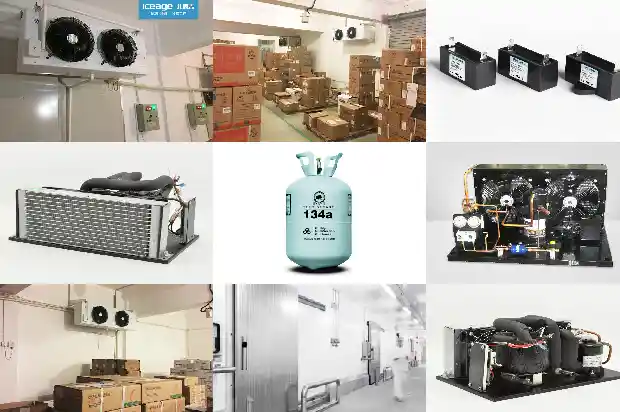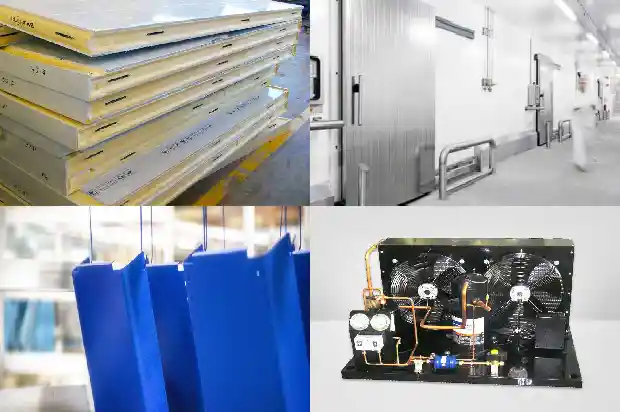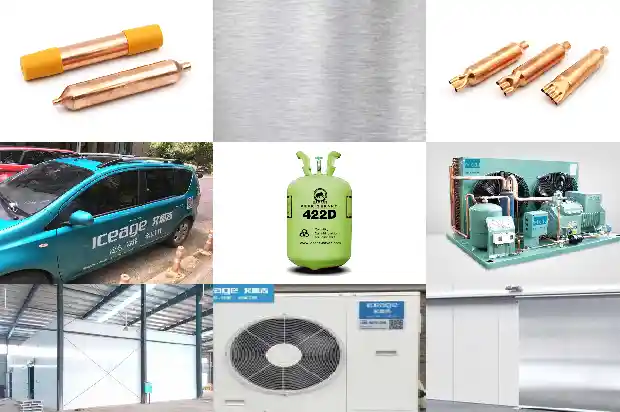Temperature Gradient Differences between Deep Foundation and Surface of Civil Cold Storage
2024-10-10
To reduce the influence of solar radiation heat, the surface color of the cold storage should be light, the surface should be smooth and flat, and large-area sun exposure should be avoided as much as possible. Measures can be taken on the roof, such as setting up a ventilation layer to reduce the direct transmission of solar radiation heat through the roof into the warehouse and thus affecting the warehouse temperature.
Civil cold storage is built on the ground. Due to the temperature gradient between the deep part of the foundation and the surface, a heat flow is formed, causing groundwater vapor to penetrate into the cold storage foundation. When the temperature of the cold storage floor drops below 0 °C, it will lead to frost heaving of the floor and damage the cold storage floor. Cold storage insulation plays an important role in maintaining the stability of the temperature in the warehouse, reducing the heat load of the cold storage, saving energy consumption and ensuring the quality of food cold storage. Therefore, the walls, floors, roofs and floor slabs of the cold storage should be insulated. The insulation structure of the cold storage should not only have good insulation and moisture-proof performance, but also have a certain strength. Its floor slab and floor should have a large bearing capacity. The insulation layer should avoid the formation of "cold bridges" and have lasting insulation efficiency. The inner wall of the insulation layer of the cold storage is provided with a protective layer to prevent damage during loading and unloading operations.
Due to the large temperature difference between the inside and outside air of the cold storage, a water vapor partial pressure difference corresponding to the temperature difference will inevitably be formed, and then water vapor will penetrate from the high-temperature side with higher partial pressure to the cold storage with lower partial pressure through the enclosure structure. When the water vapor reaches a certain temperature zone after passing through the inside of the enclosure structure and is lower than the dew point temperature of the air, the water vapor will condense into water or freeze, causing damage to the insulation structure and a decrease in insulation performance.
In order to reduce the influence of changes in temperature and humidity inside and outside the warehouse, cold storage warehouses generally do not have windows.
Civil cold storage is built on the ground. Due to the temperature gradient between the deep part of the foundation and the surface, a heat flow is formed, causing groundwater vapor to penetrate into the cold storage foundation. When the temperature of the cold storage floor drops below 0 °C, it will lead to frost heaving of the floor and damage the cold storage floor. Cold storage insulation plays an important role in maintaining the stability of the temperature in the warehouse, reducing the heat load of the cold storage, saving energy consumption and ensuring the quality of food cold storage. Therefore, the walls, floors, roofs and floor slabs of the cold storage should be insulated. The insulation structure of the cold storage should not only have good insulation and moisture-proof performance, but also have a certain strength. Its floor slab and floor should have a large bearing capacity. The insulation layer should avoid the formation of "cold bridges" and have lasting insulation efficiency. The inner wall of the insulation layer of the cold storage is provided with a protective layer to prevent damage during loading and unloading operations.
Due to the large temperature difference between the inside and outside air of the cold storage, a water vapor partial pressure difference corresponding to the temperature difference will inevitably be formed, and then water vapor will penetrate from the high-temperature side with higher partial pressure to the cold storage with lower partial pressure through the enclosure structure. When the water vapor reaches a certain temperature zone after passing through the inside of the enclosure structure and is lower than the dew point temperature of the air, the water vapor will condense into water or freeze, causing damage to the insulation structure and a decrease in insulation performance.

In order to reduce the influence of changes in temperature and humidity inside and outside the warehouse, cold storage warehouses generally do not have windows.



Related Articles
- What Misconceptions Should Be Avoided in Low - temperature Refrigeration System Repairs
- Why Does the Evaporation Temperature of the Refrigeration System Drop Too Low? And Why is the Condensing Pressure Too High?
- Introduction to the Advantages of Dual - temperature Cold Storage
- What are the characteristics of low-temperature cold storage?
- Requirements of Cold Storage Insulation for Maintaining Stable Temperature Inside
- Temperature Requirements for Various Cold Storages
- Is the heating effect of air source heat pump air conditioner with enhanced vapor injection really good under low temperature conditions?
- 15 Reasons for Excessive Temperature Rise of Motors
- Types and Temperature Requirements of Seed Cold Storages
- Influence of Condensing Temperature Variation on Vapor Compression Refrigeration System
- Introduction to the Relationship between Refrigerants and Cold Storage Temperatures
- What are the effects of pressure and temperature on the refrigeration system of a cold storage?
- Application of Economizer in Air-cooled Heat Pumps and Low-temperature Screw Compressors
- Common faults in refrigeration system (discharge temperature and pressure)
- How to distinguish the quality of refrigeration compressor unit of constant temperature and humidity test chamber?
- Nine Essential Maintenance Methods for Low Temperature Cold Storage After Installation
- High Power Consumption of Constant Temperature Freezer and Its Solutions
- What is a constant temperature and humidity air conditioner?
